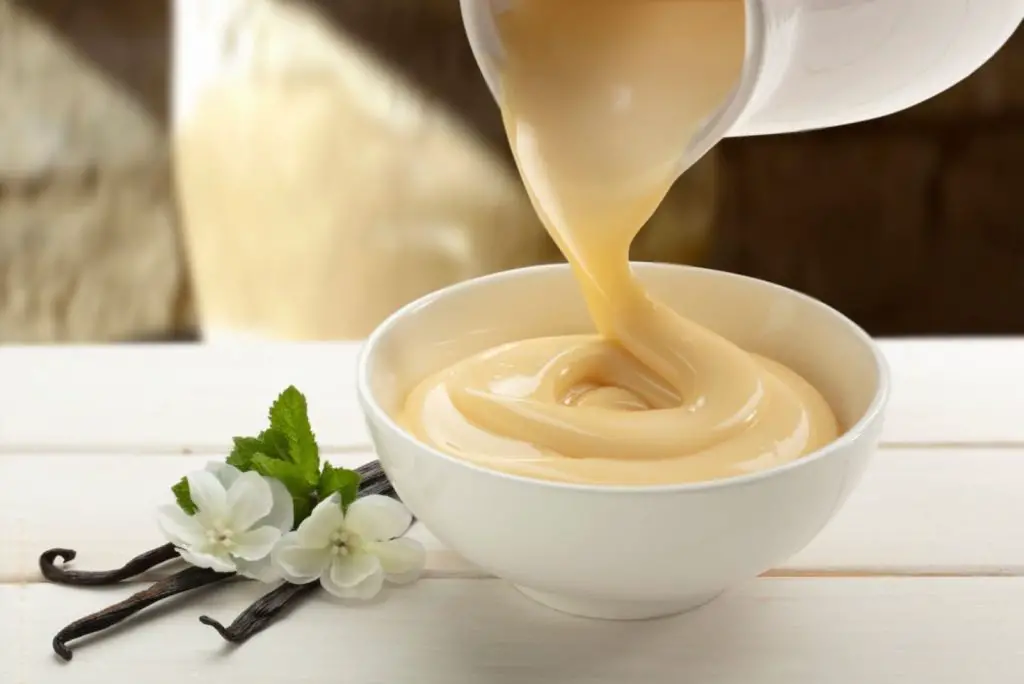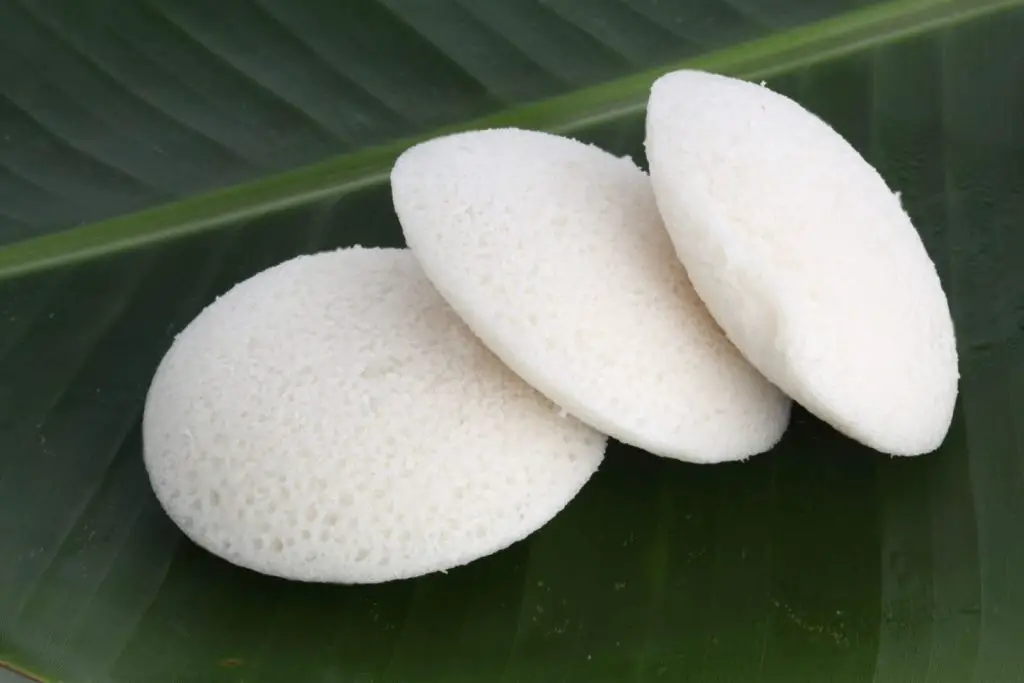
Nanaimo bars are a delicious Canadian dessert that consists of a crumb base, a creamy custard filling, and a chocolate topping. They are a sweet treat enjoyed by many, and if you find yourself with a surplus of Nanaimo bars or simply want to save some for later, freezing them is a great option. Freezing Nanaimo bars allows you to extend their shelf life and enjoy them at your convenience. In this article, we will provide you with a step-by-step guide on how to freeze Nanaimo bars while preserving their taste and texture.
Here’s a guide on how to freeze Nanaimo bars:
Step 1: Ensure freshness
Before freezing Nanaimo bars, it’s important to ensure that they are fresh and haven’t been sitting out for too long. Freshness plays a crucial role in maintaining the quality, taste, and texture of the bars throughout the freezing and thawing process.
Nanaimo bars, like any other baked goods, are best enjoyed when they are fresh and at their peak flavor. When bars are left out for an extended period, they can become stale, lose their moisture, and develop an undesirable texture. Freezing Nanaimo bars at this point will not revive their freshness or improve their quality.
To determine the freshness of Nanaimo bars, look for signs of spoilage or degradation. Check for any discoloration, mold growth, or an off smell. If you notice any of these signs, it’s best to discard the bars rather than freezing them.
If the Nanaimo bars are freshly made or have been stored properly in an airtight container, they are likely suitable for freezing. Proper storage, such as keeping the bars in a cool and dry place, can help maintain their freshness before freezing.
By ensuring the bars are fresh before freezing, you can preserve their original taste and texture. Freezing them when they are still at their best will help retain their moisture and prevent any potential degradation of flavors.
Remember, freezing is a method of preserving the quality of food, not a way to improve the taste or freshness of items that have already passed their prime. So, be mindful of the freshness of Nanaimo bars before proceeding with the freezing process to ensure the best results when you eventually thaw and enjoy them.
Step 2: Prepare for freezing
If your Nanaimo bars are not already individually portioned, it’s a good idea to cut them into desired serving sizes before freezing. This step will make it easier to thaw and serve the bars later, ensuring convenience and minimizing wastage.
By cutting the Nanaimo bars into individual portions, you eliminate the need to thaw and refreeze the entire batch whenever you crave a single bar. It allows you to take out only the number of bars you need, reducing unnecessary thawing and potential spoilage.
When determining the serving size, consider the desired portion for each serving. You can cut the bars into squares, rectangles, or any other shape that suits your preference. The typical size for Nanaimo bars is around 1-2 inches square, but you can adjust it based on your personal preference or serving requirements.
Another advantage of portioning the bars is that it helps with even and efficient freezing. Individually wrapped or separated portions freeze more quickly and uniformly than a large, uncut block of bars. This ensures that each portion freezes solidly and maintains its shape during storage.
To cut the Nanaimo bars, use a sharp knife and apply gentle pressure to avoid squishing or deforming them. If the bars have a layered filling or a delicate topping, take care to maintain their integrity while cutting.
Once you have cut the Nanaimo bars into the desired serving sizes, you can proceed to wrap each portion individually for optimal storage and easy access when you’re ready to thaw and enjoy them.
Step 3: Wrap each bar
To ensure the optimal preservation of Nanaimo bars during freezing, it’s important to wrap each bar tightly in plastic wrap. This step helps protect the bars from freezer burn and prevents moisture loss, maintaining their texture, flavor, and overall quality.
Freezer burn occurs when moisture from the surface of the food evaporates and forms ice crystals. These ice crystals can cause dehydration, resulting in changes to the texture and taste of the bars. By tightly wrapping the Nanaimo bars in plastic wrap, you create a barrier that minimizes contact with the air, reducing the risk of freezer burn.
Additionally, plastic wrap helps prevent moisture loss from the bars. Moisture loss can lead to a dry and less enjoyable texture, affecting the overall taste experience. By keeping the bars tightly wrapped, you retain their moisture content, ensuring they remain moist and delicious when thawed.
When wrapping each Nanaimo bar, make sure to cover them completely and seal the edges tightly. This prevents air from entering and moisture from escaping. It’s essential to use a high-quality plastic wrap that is specifically designed for freezer use, as it provides better protection against freezer burn and helps maintain the bars’ freshness.
If you prefer, you can also wrap each bar in aluminum foil before using the plastic wrap. This additional layer helps provide an extra barrier against air and moisture, further safeguarding the bars during freezing.
Step 4: Place in a freezer-safe container
After wrapping each Nanaimo bar tightly in plastic wrap, it’s important to transfer them to a freezer-safe container or resealable plastic bag. This step ensures further protection against freezer burn, maintains the bars’ freshness, and prevents any unwanted odors from seeping into the bars during freezing.
A freezer-safe container provides an additional layer of insulation and protection for the Nanaimo bars. It helps maintain a consistent temperature and shields the bars from any potential temperature fluctuations within the freezer. The container also helps prevent physical damage to the bars, such as being crushed or bumped, which could affect their appearance and texture.
Alternatively, a resealable plastic bag can also be used. Make sure to choose a bag specifically designed for freezer use, as it is more durable and less likely to develop punctures or tears. The bag should be sealed tightly to prevent air from entering and moisture from escaping.
By using a freezer-safe container or bag, you create an airtight environment that minimizes the risk of freezer burn and helps retain the bars’ quality. It also prevents any odors from other frozen items in the freezer from seeping into the Nanaimo bars, preserving their distinct flavor and aroma.
When selecting a container or bag, ensure that it is clean, dry, and large enough to accommodate the wrapped Nanaimo bars without crowding or squishing them. If using a container, consider placing a layer of parchment paper or wax paper between the bars to prevent them from sticking together.
Step 5: Label and date
Labeling the container or bag that contains the frozen Nanaimo bars with the name “Nanaimo bars” and the date of freezing is an important step in maintaining organization and ensuring you use them within a reasonable time frame. This labeling practice helps you keep track of the bars’ freshness and enables you to prioritize their consumption based on the storage duration.
By labeling the container or bag with the name “Nanaimo bars,” you clearly identify its contents. This is especially useful if you have multiple items stored in the freezer. It prevents confusion and makes it easy to locate the Nanaimo bars when you’re ready to enjoy them.
Including the date of freezing is equally important. It allows you to monitor the duration of time the Nanaimo bars have been stored in the freezer. While frozen foods generally maintain their safety for an extended period, the quality may begin to decline over time. By noting the freezing date, you can keep track of how long the bars have been in the freezer and prioritize their consumption accordingly.
The freshness and quality of the Nanaimo bars can gradually decline over time due to factors such as freezer burn, flavor changes, or loss of texture. While there isn’t a fixed expiration date for frozen Nanaimo bars, it’s generally recommended to consume them within 2 to 3 months for optimal taste and texture.
Having the label with the freezing date allows you to practice a first-in, first-out approach. This means you can consume the oldest frozen Nanaimo bars first and ensure that none of them go to waste. By using them within a reasonable time frame, you maximize their enjoyment and minimize the risk of consuming bars that have been frozen for an extended period.
Labeling the container or bag with the name “Nanaimo bars” and the date of freezing helps you stay organized, keep track of freshness, and ensure the best taste and texture when enjoying the bars. It’s a simple step that can greatly enhance your frozen Nanaimo bar experience.
Step 6: Freeze
Once the wrapped and labeled Nanaimo bars are placed in a freezer-safe container or bag, it’s time to transfer them to the freezer. Properly freezing the bars is crucial for maintaining their shape, texture, and overall quality until you’re ready to indulge in their deliciousness.
When placing the container or bag in the freezer, ensure it is positioned in a flat and stable manner. This prevents the bars from getting squished, deformed, or damaged during freezing. Keeping them in a flat position helps retain their original shape, ensuring they remain visually appealing when thawed and served.
If the bars are stored at an angle or in an unstable position, there is a risk of them leaning against each other or against the container walls, resulting in misshapen bars or uneven distribution of the layers. Placing the container or bag flat also allows for easier stacking and organization in the freezer, maximizing storage space.
Freezing the Nanaimo bars in a flat position also helps with even and consistent freezing. It ensures that the bars freeze uniformly, preventing any potential texture or taste inconsistencies. This is particularly important for maintaining the integrity of the creamy custard filling and the smooth chocolate topping.
Once the Nanaimo bars are placed in the freezer, it’s essential to leave them undisturbed until you’re ready to enjoy them. Opening the freezer frequently or moving the bars around can introduce temperature fluctuations, potentially affecting their quality. It’s best to keep them in a dedicated section of the freezer, away from other items that might cause disturbances or odors.
How can Nanaimo bars last in the freezer?
Nanaimo bars can last in the freezer for up to 2 to 3 months when properly stored. To ensure their longevity, it’s essential to wrap each bar tightly in plastic wrap, place them in a freezer-safe container or bag, and label them with the freezing date. Keeping the bars in a flat position in the freezer and minimizing temperature fluctuations by avoiding frequent opening of the freezer door also contribute to their extended shelf life.
Step 7: Thaw and serve
When the time comes to indulge in the frozen Nanaimo bars, it’s important to thaw them properly to ensure the best texture, taste, and overall enjoyment. Follow these steps to thaw and serve the bars:
- Remove the desired number of Nanaimo bars from the freezer: Determine how many bars you want to thaw based on your immediate serving needs. It’s best to only thaw the number of bars you plan to consume to avoid repeated freezing and thawing, which can affect their quality.
- Thaw in the refrigerator: Place the wrapped Nanaimo bars in the refrigerator and let them thaw slowly for a few hours. This gradual thawing process helps maintain their texture and prevents any excessive moisture accumulation.
- Thaw at room temperature (optional): If you prefer a quicker thawing method, you can let the bars sit at room temperature for about 30 minutes. However, be mindful of the temperature and ensure that the bars don’t become overly soft or warm, as it can affect their structure and flavor.
- Check for thawing completeness: Once the Nanaimo bars have thawed, carefully unwrap one to check its consistency. It should be soft and easy to bite into, with the layers and textures intact. If it feels too firm or partially frozen, allow it to thaw for a bit longer.
- Serve and enjoy: Once fully thawed, the Nanaimo bars are ready to be served and enjoyed. Place them on a serving platter or individual plates and savor each delicious bite.
Thawing the Nanaimo bars gradually in the refrigerator or at room temperature allows them to reach an optimal serving consistency while preserving their flavors and textures. Avoid using methods like microwaving or placing them in warm water, as these can lead to uneven thawing, loss of texture, or even melting of the chocolate layer.
Should I thaw Nanaimo bars before serving, or can I eat them frozen?
Nanaimo bars are typically enjoyed after they have been thawed. Thawing allows for a softer texture and enhances the flavors of the different layers. However, if you prefer a firmer and more frozen treat, you can enjoy them straight from the freezer.
Other related questions
Can I refreeze Nanaimo bars?
Refreezing Nanaimo bars is not recommended as it can negatively impact their quality and texture. When thawed, the bars may experience moisture loss, become soggy, or develop an undesirable texture. To maintain the best taste and consistency, it is advisable to consume Nanaimo bars after the initial thawing and not refreeze them.
How do I know if the Nanaimo bars have gone bad after being frozen?
After being frozen, Nanaimo bars may exhibit signs of spoilage if they have gone bad. Look for indications such as an off odor, mold growth, or significant changes in texture or color. If the bars appear discolored, have an unpleasant smell, or display an unusual texture, it is best to discard them to ensure food safety.
Can I freeze Nanaimo bars with a different flavor variation, such as mint or peanut butter?
Absolutely! Nanaimo bars with different flavor variations, such as mint or peanut butter, can be frozen following the same steps. Just ensure they are properly wrapped and stored in a freezer-safe container to maintain their unique flavors.
Can I freeze Nanaimo bars that have already been topped with chocolate?
Yes, you can freeze Nanaimo bars that have already been topped with chocolate. Ensure that the chocolate is fully set and hardened before wrapping and freezing to prevent smudging or sticking.
Can I freeze Nanaimo bars that have been decorated with additional toppings, such as nuts or sprinkles?
Yes, you can freeze Nanaimo bars that have been decorated with additional toppings. Just ensure that the toppings are firmly attached to the bars and consider any potential changes in texture or appearance that may occur during freezing.
Can I freeze Nanaimo bars that have been made with gluten-free or vegan ingredients?
Absolutely! Nanaimo bars made with gluten-free or vegan ingredients can be frozen just like traditional Nanaimo bars. Follow the same freezing steps, ensuring proper wrapping and storage, to preserve their taste and texture.
Should I freeze Nanaimo bars with or without the custard filling?
Freeze Nanaimo bars with the custard filling intact. The custard layer adds to the flavor and texture of the bars, and freezing helps preserve its creamy consistency.
Can I freeze Nanaimo bars that have been made with alternative sweeteners?
Yes, you can freeze Nanaimo bars made with alternative sweeteners. The freezing process will not significantly affect the taste or texture of the bars, allowing you to enjoy the alternative sweetener version even after freezing.
Can I freeze Nanaimo bars that have been made with gluten-free graham crackers?
Absolutely! Nanaimo bars made with gluten-free graham crackers can be frozen in the same way as regular Nanaimo bars. Just ensure they are wrapped tightly and stored properly to maintain their texture and flavor.
Can I freeze Nanaimo bars that have been made with a different type of chocolate?
Yes, you can freeze Nanaimo bars made with different types of chocolate. Whether it’s milk chocolate, dark chocolate, or even white chocolate, the freezing process will help maintain the chocolate’s integrity and preserve the bars’ overall taste and appearance.
Can I freeze Nanaimo bars that have been made with coconut oil instead of butter?
Absolutely! Nanaimo bars made with coconut oil instead of butter can be successfully frozen. Coconut oil solidifies when chilled, providing the necessary structure and texture for the bars.








